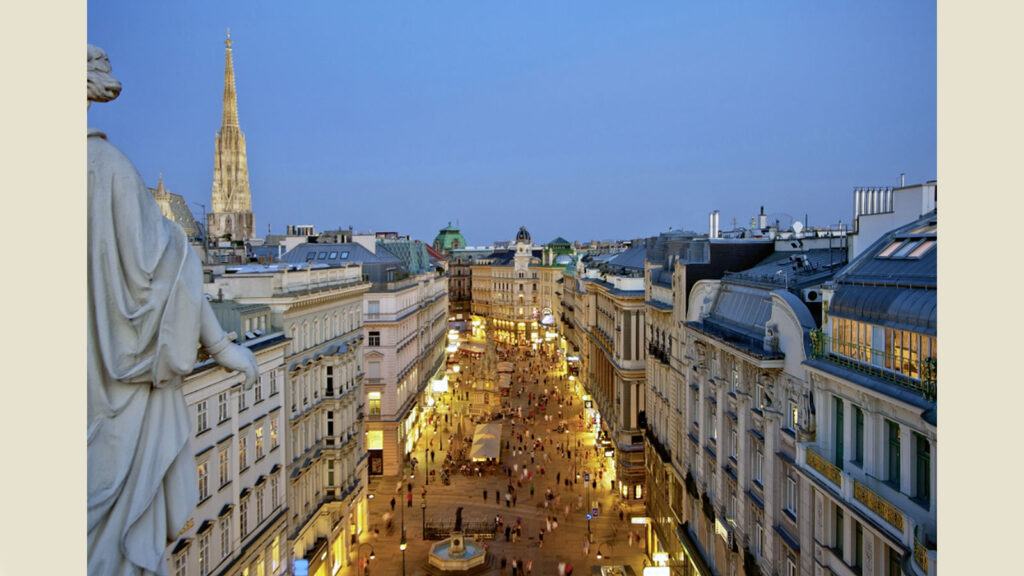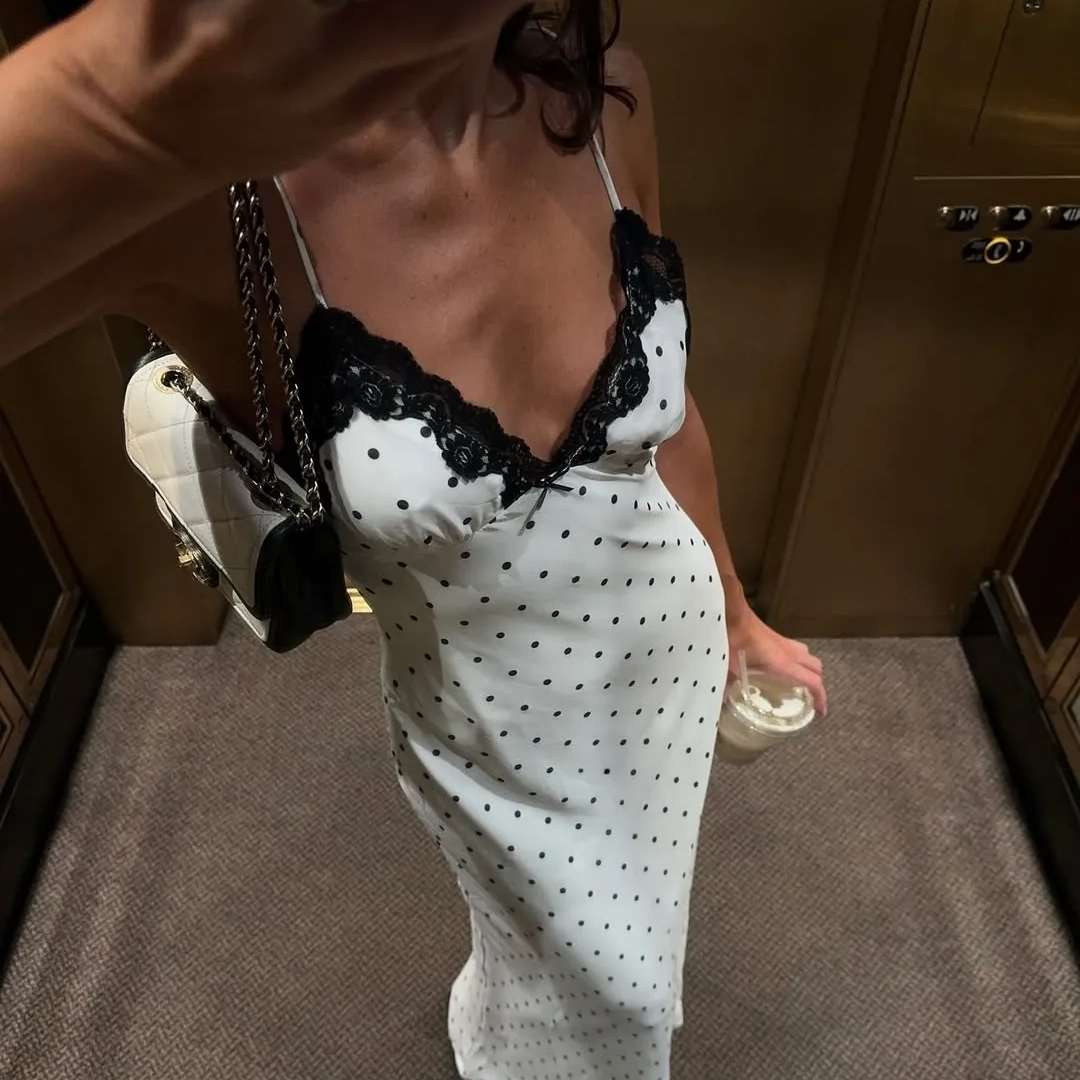Breaking Down the Thrilling Ending of The Glass Dome
Breaking down the many twists that lead to The Glass Dome's thrilling ending


Warning: Spoilers ahead for Netflix’s The Glass Dome
In The Glass Dome, a Netflix series based on a story by the Swedish crime author Camilla Läckberg’, Lejla (Léonie Vincent) returns to her hometown after the death of her adoptive mother. The trip back to Granås, a small village in Sweden, becomes a nightmare when a local child goes missing. The timing and setting of the mysterious disappearance feels eerily familiar to Lejla. As a child, she was once kidnapped and held prisoner inside a “glass dome” by an unknown captor. [time-brightcove not-tgx=”true”]
Now a criminologist, she finds her life turned upside down as she investigates a case that hits very close to home. As the mystery unfolds, Lejla is forced to confront her past and question whether the girl’s disappearance is a coincidence, or connected to something much darker.
Here are the biggest mysteries raised in The Glass Dome and the twists that lead to its thrilling conclusion.
Returning to Granås
The Glass Dome opens as Lejla reunites with her origins. The criminologist, who lives in the U.S. and has built her career in response to the trauma from her childhood, returns to the small town of Granås for the funeral of her adoptive mother Ann-Marie. What’s meant to be a brief visit turns into something much bigger—and darker—than any farewell ceremony.
Lejla also reunites with her adoptive father, Valter Ness, a former local police officer, rekindling a relationship marked by respect as well as an emotional distance that’s grown over time. It’s clear that Lejla was never very close to Ann-Marie, and that she has concerns about Valter, who seems to carry a burden heavier than grief. Fragmented memories from her past, especially from the time of the kidnapping, begin resurfacing for Lejla, triggering her at the most inconvenient times.
Louise’s death and Alicia’s disappearance
The story takes a sharp turn when Lejla decides to visit Louise, her childhood friend, before returning to the U.S. Upon arriving at Louise’s house, she finds the door open, loud music, and no sign of Louise—until she finds her dead in the bathtub, surrounded by blood. Louise has a deep cut on her arm, and a small knife, suggesting she died by suicide. Lejla is alarmed and grows even more concerned when she discovers that Louise’s daughter Alicia is missing.
The girl’s disappearance turns the tragedy into a mystery. Authorities and volunteers mobilize to search for Alicia, combing through the nearby forest. Tomas, the current police chief and a longtime friend of Valter, takes charge of the investigation. When he finds Alicia’s clothes and shoes at the entrance of an old mine in the town, he officially treats the case as a crime.
“With Louise’s death she loses one of the few people she can feel safe with,” creator Camilla Läckberg and director Lisa Farzaneh tell TIME of Lejla’s situation. “Louise’s death also heightens the worry about what has happened to Alicia, it shows clearly that she is with someone who does not hesitate to kill.”

The focus on Said
The discovery of the clothes in an area of the mine associated with Louise’s family generates suspicion in Tomas, who makes a controversial decision to detain Said, Alicia’s father, as the main suspect. Despite his grief over his wife’s death and daughter’s disappearance, Said becomes the target of interrogation.
Tomas’s approach raises questions. He presses Said about his relationship with Louise and insinuates that he is too calm for someone who is mourning. Tomas reveals that the couple was getting divorced, but that only Louise signed the divorce papers, which deepens suspicions. The line between investigation and persecution begins to blur, especially when Tomas claims that Said’s house will be treated as a crime scene.
The clothes, videos, and the strange builder
While Tomas continues the official investigation, Lejla decides to take matters into her own hands. She and Valter return to the site where Alicia’s clothes were found, and Lejla recognizes them as the ones Alicia wore at Ann-Marie’s funeral, the day before the disappearance. This clue is important as it narrows down the timeframe for the possible kidnapping.
The key question becomes: who would have easy access to Alicia and could have approached her without raising suspicion? The answer comes when they learn that last fall, some builders worked on the roof of the family’s house. One of them, Maksim, is said to have been inappropriately close with Alicia. When tracked down by Lejla, he says that Alicia and his daughter were the same age, became friends, and exchanged messages on his phone. Maksim shows Lejla the videos the sent each other, which clears him from suspicion but reveals just how vulnerable Alicia was.
Dolls, cuts, and Ecki
Because Lejla doesn’t remember the details of her own kidnapping, she begins looking through the records of that case to jog her memory and potentially find a connection to the present-day case. When reviewing old recordings of her sessions with the police, Lejla recalls unsettling memories. She refers to her kidnapper by the name Ecki, a man who gave her dolls when reading books and had a ritualistic habit of cutting the girls’ hair before killing them. In the recordings, Lejla says she escaped by luck, but that three other girls weren’t so fortunate.
These details, which seem almost symbolic, echo in Lejla’s current investigation. The way Alicia disappeared, Lejla’s emotional reconstruction, and the resurfacing of the name “Ecki” through the eyes of another child suggest that the story is repeating itself—or that it never truly ended.

Tomas, Louise, and the secret that could collapse the investigation
Another twist shakes the investigation: Tomas admits to having had a relationship with Louise while she was still going through the separation process. Lejla uncovers this through a video of Louise with another man. Pressuring Tomas, he admits to the affair and pleads for it to remain private.
Valter, however, doesn’t forgive. He accuses Tomas of being too emotionally involved to lead the investigation. This situation calls into question the credibility of the local police force and opens the door for Lejla and Valter to take a more active role in the upcoming episodes.
“The story builds on the fact that everyone has secrets,” the show creators say. “This affects not only the investigation, but also the everyday life in a small town where everybody knows each other.”
The press conference, revelations, and Lejla’s “fan”
The town is in chaos. During a press conference, Tomas tries to distance the disappearance of Alicia from Lejla’s kidnapping 22 years earlier. However, his attempt to disconnect the cases seems increasingly forced, especially after the autopsy shows that Louise was drugged before her death—reinforcing the theory that she was actually murdered.
In this chaotic context, a new character emerges: Martin. He casually approaches Lejla in a café, claiming to follow her work in San Diego and admitting he’s always been “fascinated” by her story.
The investigation advances when Lejla gets to know Martin more closely—or rather, Daniel Frick, his real name. Obsessed with the story of Lejla’s kidnapping, which was widely covered in the media at the time, since his own childhood, Daniel reveals he recreated Lejla’s original kidnapping by taking a little girl, Elma, who had long dark hair, making authorities think she was the same person from 22 years ago. But Martin is just an imitator seeking attention and did not kidnap Alicia.
“People who commit crimes are often intrigued by crime. They often admire other criminals and see them as idols,” says Läckberg “Daniel is a man driven by a dark desire. He feels no guilt about it, and his only fear is getting caught. He is fascinated by Lejlas’s kidnapper, admires him, and wants to be part of that glory.”
The real Ecki
During the investigation, Lejla starts suspecting Tomas. He had Louise’s phone and seemed to be hiding something serious. But the truth is that he only wanted to conceal the affair he had with her. None of this, however, prepares Lejla for the most devastating revelation.
Valter, her adoptive father, is the real Ecki—the man who kidnapped her as a child. Now, he has done it again. Lejla learns the truth in the last episode, when she is hiding from Tomas on her own property and someone drugs her and takes her captive. It’s Valter, who takes her to the same hideout where he has been keeping Alicia—imprisoning her in the very home she thought was safe.
“The idea was from the start built on Valter being a “wolf in sheep’s clothing” and it comes from my fascination for killers and psychopaths who are capable of having normal lives, while committing horrible crimes,” says Läckberg.
Concerned by Lejla’s disappearance and with no answers, Tomas decides to return to Valter’s house. There, he finds a dead police officer—the same one assigned to protect Lejla.
Upon investigating the property, Tomas uncovers a hidden underground chamber. Inside, he finds Alicia unconscious after being strangled by Valter. Lejla, bleeding, is trapped inside a glass dome, banging her head on the glass to draw attention and prevent Valter from hurting the girl further. Tomas manages to stop the worst. Valter is arrested, and Lejla and Alicia are finally rescued.

In the series’ final moments, Lejla visits Valter in prison and asks where the bodies of the other victims are. He answers coldly: in the lake where he used to take her when she was little. The revelation is direct and chilling, emotionless but devastating. What Lejla thought was a place of cherished memories between father and daughter was, in fact, a silent cemetery.
Lejla also learns how she ended up in Valter’s family. He admits that he decided to kidnap Lejla when he first saw her at a town event, as a child with her biological mother. Valter developed an obsession with Lejla and kidnapped her. By the time Lejla escaped his captivity, her mother was already dead. Driven by this obsession, Valter decided to adopt her to keep her close. This was only possible because Lejla had never seen her kidnapper’s face. He confessed that he loved her in a possessive way and, for that reason, wanted her to stay with him—by any means necessary.
“He uses love as a way to keep his control of her. Love is the way he lures her in, and what keeps her close to him,” says Läckberg. “He takes advantage of her need to belong somewhere and be loved, because without him she is alone in the world.”






































































